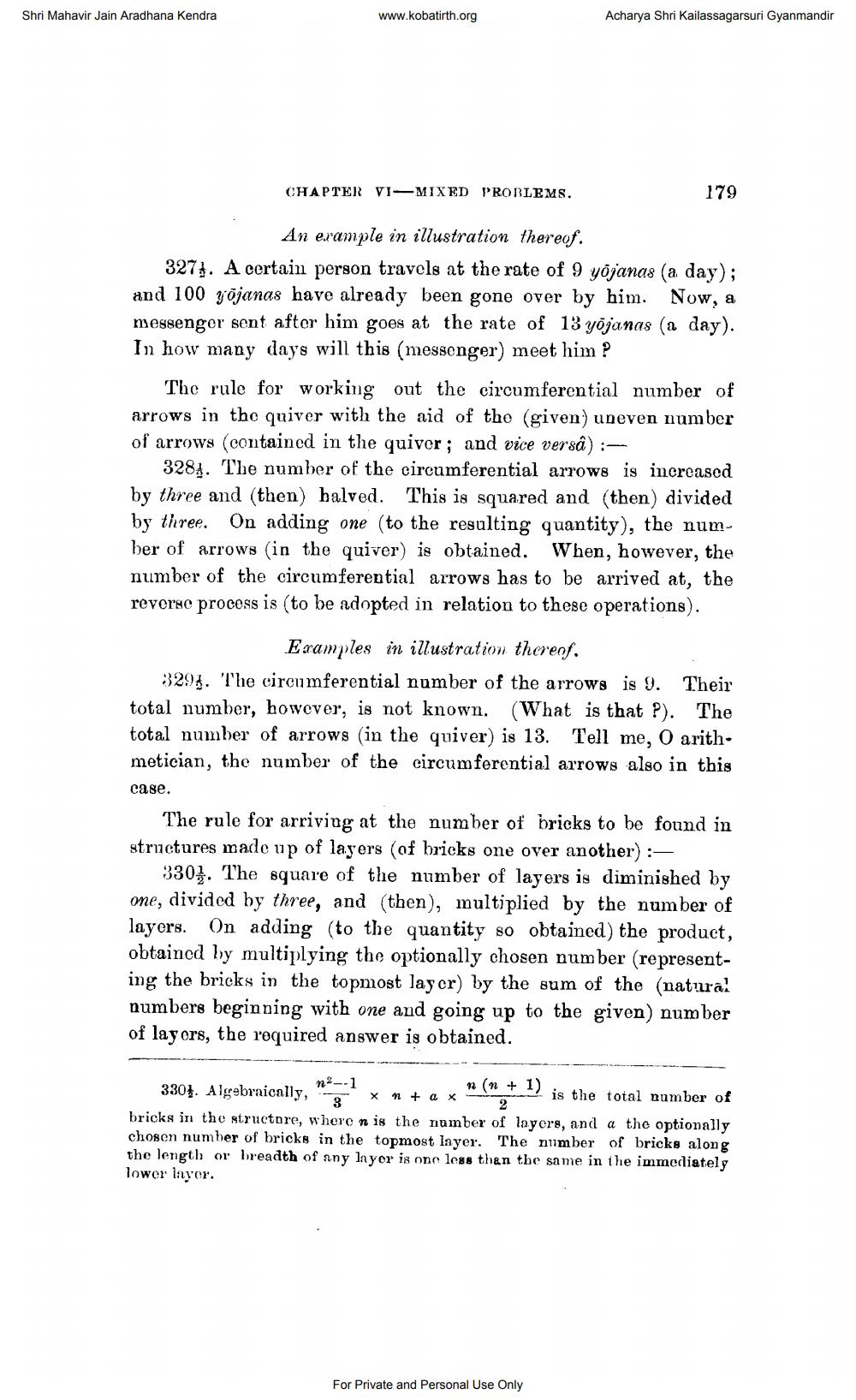________________
Shri Mahavir Jain Aradhana Kendra
www.kobatirth.org
Acharya Shri Kailassagarsuri Gyanmandir
CHAPTER VI-MIXED PROBLEMS.
179
An example in illustration thereof. 3274. A certain person travels at the rate of 9 yojanas (a day); and 100 jõjanas have already been gone over by him. Now, a messenger sent after him goes at the rate of 13 yojanas (a day). In how many days will this (messenger) meet him ?
The rule for working out the circumferential number of arrows in the quiver with the aid of the (given) uneven number of arrows (contained in the quiver; and vice versa) :
3284. The number of the circumferential arrow is increased by three and (then) halved. This is squared and then divided by three. On adding one (to the resulting quantity), the number of arrows in the quiver) is obtained. When, however, the number of the circumferential arrows has to be arrived at, the reverse process is (to be adopted in relation to these operations).
Examples in illustration thereof. 3294. The circumferential number of the arrows is 9. Their total number, however, is not known. (What is that ?). The total number of arrows (in the quiver) is 13. Tell me, O arithmetician, the number of the circumferential arrows also in this case.
The rule for arriving at the number of bricks to be found in structures made up of layers (of bricks one over another) :
3301. The square of the number of layers is diminished by one, divided by three, and (then), multiplied by the number of layers. On adding (to the quantity so obtained) the product, obtained by multiplying the optionally chosen number (representing the bricks in the topmost layer) by the sum of the (natura! numbers beginning with one and going up to the given) number of layers, the required answer is obtained.
12--1
(n + * (n
1) 3301. Algebraically, - X1 +
a2
.
) is the total number of bricks in the structure, where n is the number of layers, and a the optionally chosen number of bricks in the topmost layer. The number of bricks along the length or breadth of any layer is one less than the same in the immediately lower layer.
For Private and Personal Use Only




